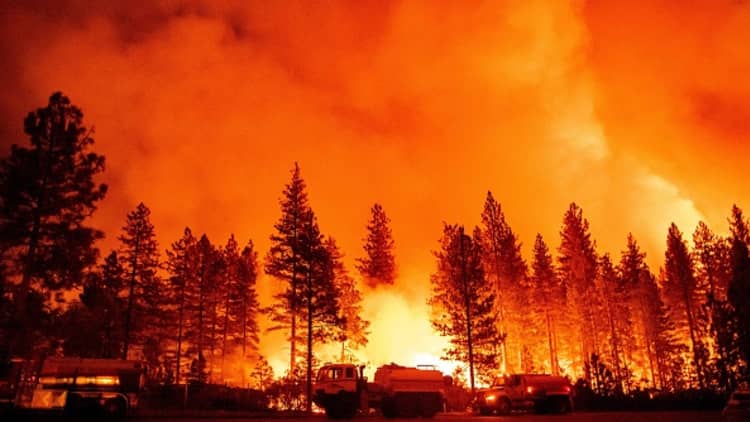Over 18 million rental units are at risk from environmental hazards:
D3sign | Stone | Getty Images
Extreme weather and climate hazards are becoming more frequent, posing a unique threat not only for homeowners, but for renters.
Over 18 million rental units across the U.S. are exposed to climate and weather-related hazards, according to the latest American Rental Housing Report from Harvard University’s Joint Center for Housing Studies.
Harvard researchers paired data from the FEMA National Risk Index with the five-year American Community Survey to find out what units are in the areas that are expected to have annual economic loss every year from environmental hazards like wildfires, flooding, earthquakes, hurricanes and more.
“The rental housing stock is the oldest it ever has been and a lot of it is not suited for the growing frequency, severity and diversity in environmental hazards,” said Sophia Wedeen, research analyst focused on rental housing, residential remodeling and affordability at the Joint Center for Housing Studies.
More from Personal Finance:
What tenants should know to make rent improve credit
Three ways Gen Zers can boost credit before renting
‘Housing affordability is reshaping migration trends’
In 2023, there were 28 weather and climate disasters with damages totaling $1 billion or more, a record high, according to the latest report by the NOAA National Centers for Environmental Information. These weather disruptions collectively cost $92.9 billion in damages, an estimate adjusted for inflation, the agency found.
“It’s clear that not only are climate hazards happening more often, but they’re happening more often in places where people live, which is why we’re seeing all of these damages increase over time,” said Jeremy Porter, head of climate implications research for First Street Foundation, a nonprofit organization in New York.
Some renters ‘can’t afford to move away from the risk’
At a national level, 45% of single-family rentals and 35% to 40% of units in small, midsize and large multi-family buildings are located in census tracts, or neighborhoods, that are exposed to annual losses from climate-related hazards, the Harvard study found.
Units with the highest risk are manufactured housing like mobile homes and RVs, said Wedeen. While they’re a smaller share of the rental stock, 52% of manufactured units are located in areas with extreme weather exposure.
As the market already faces a declining supply of low-rent units available, “environmental hazards would really exacerbate the existing affordability concerns,” Wedeen said.

Residents in units like manufactured housing, low-rent or subsidized units are also often stuck with the housing they have or lack the same level of mobility as wealthier renters, experts say.
“These populations are more vulnerable and don’t have the financial means to protect themselves against the risks that exist,” Porter said. “It’s sort of a compounding risk when we see these increases in climate hazards and start impacting people who can’t afford to move away from…
Read More: Over 18 million rental units are at risk from environmental hazards:
